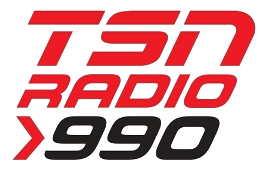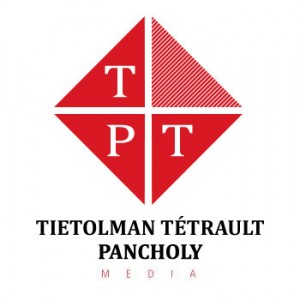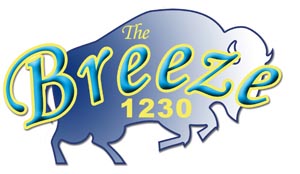NorthEast Radio Watch 11/18/2024: Sims Gets Yankees Callup
In this week’s issue… Yankees hire Dave Sims - Wallace, Maxwell move in NYC - Gray cuts news in Maine - Remembering CT's Pinto By SCOTT FYBUSH Jump to: ME - NH - VT - MA - RI - CT...
In this week’s issue: Bell wants a language shift in Montreal – TTP seeks new 600 – A new 1220 in St. Catharines? – One more year for Gil Santos – Jim Horn to retire from WSBA
by SCOTT FYBUSH
*Even as regulators in CANADA have been relaxing many of the onerous rules that have long governed broadcasting north of the border, one policy has held fast: stations licensed in English have to keep broadcasting in English, and stations licensed in French have to keep broadcasting in French. But with the AM dial in Montreal already poised for some very big changes in the next few months, media giant Bell Canada is asking the CRTC to allow it to flip one of its AMs, CKGM, from English to French – at the same time a rival broadcaster is asking the CRTC for permission to start a new English-language signal.


When Bell announced its acquisition of Astral Media earlier this year, there was an obvious problem: adding Astral’s CJAD (800), CJFM (95.9) and CHOM (97.7) to Bell’s existing CKGM (990) would have put the company over the three-station cap for English-language ownership in the market. (French-language Montreal is considered a separate market with a separate ownership cap.)
What to do? CKGM’s “TSN Radio” sports format is the lowest-rated English signal in the market, and it was widely expected that Bell would put it up for sale. Instead, Bell shocked the market last week by telling the CRTC it plans to shift CKGM to a French-language sports format under the “RDS” branding (“Reseau de sports” is the Bell-0wned, French-language cable sports network that’s a sister to TSN), possibly as early as January 2013 if the agency gives its approval.
Bell’s plan looks like this:
[private]
The cornerstone of the TSN Radio programming, English-language Canadiens hockey broadcasts, will move to market-dominant CJAD, further solidifying its hold on the English talk landscape (at least for now – but we’ll get to the Tietolman group in a moment!) In French, meanwhile, Bell sees a hole for French-language sports talk after Cogeco flipped CKAC (730) from sports to all-traffic last year. At least for now, CKAC’s valuable sports rights – yes, the Canadiens – have moved over to Cogeco’s’ French talker, CHMP (98.5), in an odd preview of the move Bell wants to make with CJAD, but since the Habs are already on RDS for most of their TV games, it’s not hard to imagine that Bell will make a play to move the team to RDS Radio as well.


Here’s where it gets really interesting: at last year’s hearings for the frequency, the specific rationale Bell cited for needing to move CKGM from 990 to 690 was the restrictive directional pattern on 990…which excluded much of the area west of Montreal where the English-speaking audience lives. Had 690 in fact gone English, it would have been the first time the frequency (the only former I-A clear channel in Montreal) had spoken anything but French in its long history.
(Another little bit of irony in a story that’s full of it: in CKGM’s glory days as a music station in the 1970s, back when it was at its original 980 spot on the dial, jocks such as Marc “Mais Oui” Denis shot the station to the top of the ratings by speaking both English and French on the air. The polarized language politics of the day eventually forced the CRTC to outlaw bilingual operation, and so CKGM stopped speaking French on January 1, 1980.)
On September 10, Bell will get to explain its plans to the CRTC at a public hearing in Montreal, and we have a preview of how the argument will go. In its application to shift CKGM to French, Bell notes that the Montreal markets have become unbalanced, with one English-language station for every 169,000 listeners and one French station for every 370,000 listeners, and it says there’s a void for French-language sports programming since CKAC’s flip to traffic. That’s the carrot; the stick is a threat from Bell that if the language flip isn’t granted, or if the CRTC decides it justifies a call for competing applications for 690, that Bell will simply shut down CKGM or try to put it up for sale.
Listeners to CKGM’s current format may be few in number, but they’re fiercely loyal: the announcement of the move prompted a flood of message-board postings and online petitions. You won’t hear anything about it on TSN 990’s shows, though; the order went down immediately from Bell that CKGM staffers aren’t supposed to discuss the change on the air or allow listeners to bring up the topic when they call in, at risk of being left jobless even earlier. (And therein lies yet another twist in this very complex story: it’s been only a few short months since CKGM brought veteran Montreal radio personality Ted Bird back to town, and the rumors are already swirling about Bird being moved to Astral’s CHOM 97.7 to be reunited with longtime on-air partner Terry DiMonte.)


At the time, TTP had applied for 690 as well, telling the CRTC that it needed to operate both in English and French to be profitable, but its bid for that frequency was trumped by CKGM’s move. TTP had told the CRTC that it wouldn’t consider any facility other than the 50,000-watt signals on 690 and 940, but it’s now prepared to move forward with a 10 kW day/5 kW night signal on 600 and expecting speedy CRTC approval of the plan. If it’s granted, TTP will operate both 600 and 940 from the Cogeco-owned Kahnawake transmitter site that was the historic CFCF/CIQC facility and was later home to CINW/CINF.
*So here’s where the Montreal AM dial stands after a few very turbulent years: Astral’s CJAD 800, soon to be Bell-owned, remains a rare bastion of stability, regularly attracting a full 25% of the English-language audience, and it’s not going to do anything to imperil that – but even if CJAD can absorb some of the current CKGM listenership, its dominance stands to be challenged by TTP’s entry on 600.
For Francophones, the AM dial has become nearly irrelevant: with CKAC’s flip to traffic, only suburban CJMS (1040) and CJLV (1570) remain as mass-appeal French-language AM signals, but both stations are struggling for survival. With potentially three new French AMs ready to launch, will listeners return? Bell’s application for CKGM predicts that “RDS Radio 690” will garner a 3.5% audience share by its seventh year in operation, and TTP expects similar numbers for its signal on 940. The third new Francophone player, Evanov’s “Radio Fierte,” is due to launch on 990 once CKGM moves down the dial, and it’s a niche player aimed at the market’s gay and lesbian community.
Even after all that shuffling, there’s still one more Montreal AM channel that remains available for future use: 850 went silent when CKVL (the station founded by Jack Tietolman, father of TTP principal Paul Tietolman) became CINF on 690 back in 2001. If Bell’s proposed CKGM language flip were to be denied, leaving 990-turned-690 to be spun off, does Bell remain committed enough to the RDS Radio business model to apply for a new French-language 850 signal? And then there’s Cogeco, which flipped CKAC to French-language traffic in order to fulfill a contract with Quebec’s transporation ministry to provide all-traffic radio in both French and English. Cogeco had originally planned to revive the 690 and 940 signals for those services, but withdrew after competing applications came in from TTP, Bell and others. Montreal media guru Steve Faguy observes that TTP’s contract with Cogeco for the use of the Kahnawahke site explicitly bars TTP from running an all-traffic format of its own – does that mean Cogeco still hopes to do English traffic somewhere on the dial?


When the CRTC hears the application at that September 10 hearing, it’s sure to have some tough questions about the proposal. Over the last few months, correspondence has been flying back and forth between the applicants and the agency seeking more detailed information about several parts of the application that were incomplete (always a CRTC no-no).And given that the CRTC pulled the plug on the old CHSC in large part because it abandoned its local audience in St. Catharines in search of a bigger audience across the lake in the greater Toronto area, the CRTC will no doubt be suspicious of the promises from Vaithilingam and Kandiah that the “new CHSC” will return to a focus on St. Catharines, programming 88% of its hours in English. (Vaithilingam, it should be noted, recently put low-power CJVF 105.9 on the air in suburban Toronto to serve the Tamil community there.)
*Radio People on the Move: “Rockin’ Rod” has left CKGE (94.9 Oshawa) after almost a decade at “The Rock,” moving up to cottage country to become PD and morning man at CHGB (97.7 the Beach) in Wasaga Beach/Collingwood. In Ottawa, Joe Leary is out as morning man at CJOT (99.7 BOOM FM).
*Perhaps the biggest story stateside this week is the dispute between Time Warner Cable and Hearst Television that took Hearst-owned TV stations dark on many cable screens across the region.
The largest Hearst station in NERW-land, Boston’s WCVB (Channel 5), is also one of those least affected by the fight: most cable systems in the Boston market these days are Comcast, and for now it’s in good standing with WCVB, leaving only some systems in western Massachusetts that normally pick up WCVB but have the channel blacked out for now.
In northern NEW HAMPSHIRE and southern MAINE, it’s viewers of two other Hearst-owned ABC affiliates, WMUR (Channel 9) from Manchester and WMTW (Channel 8) from Poland Spring, that are affected. Unlike the Berkshires system, which gets Albany’s WTEN (Channel 10) as an ABC alternative to WCVB, the Time Warner systems in places such as York County, Maine have no alternate local ABC station available, so some viewers are left with the Hallmark Music Channel in place of WMUR or WMTW for the moment. In other areas, though, Time Warner is piping in out-of-market signals owned by Nexstar Broadcasting, which explains why viewers up in Berlin, N.H. are seeing WUTR (Channel 20) from Utica, New York where they’d normally see WMTW.
Time Warner customers in northern New York who normally get Plattsburgh’s WPTZ (Channel 5) are instead seeing Nexstar-owned NBC affiliate WBRE (Channel 28) from Wilkes-Barre, Pennsylvania – and they’re in very good company: WBRE is also being distributed in place of local Hearst NBC affiliates as far afield as Orlando, Florida!


In Louisville, the replacement of WLKY by WROC prompted an unusual reaction: a bunch of particularly snarky residents of the newly-redubbed “Rochestucky” started their own Facebook group, “Louisville Loves WROC-8,” complete with nightly live-blogging of WROC’s newscasts. Officially, Nexstar says Time Warner doesn’t have permission to import its signals (though this isn’t the first time Time Warner has used Nexstar out-of-market signals during retransmission disputes), but it’s surely not just a coincidence that the group’s founder, Louisville writer/editor Shannon Ragland, was the WROC “Fan of the Day” during Friday’s newscasts…
(The remaining Hearst station in NERW-land, Pittsburgh’s WTAE, is only slightly affected; the only Time Warner systems in its coverage area serve the Clarksburg/Fairmont, West Virginia area, technically outside the Pittsburgh market; it’s not clear whether viewers there are getting WUTR fed to them.)
*back to MASSACHUSETTS: While we wait for clues on Clear Channel’s plans for its new Boston-market property with less than a week remaining until it takes the keys to WFNX (101.7 Lynn), we know one thing that’s not changing this fall in the Bay State. The Brockton Enterprise reports Gil Santos will be back in the booth this fall for his 36th and final season as the radio voice of the New England Patriots on WBZ-FM (98.5 Boston). Santos, who’s now 72, had some health scares over the winter, leaving his return to the booth uncertain – and the Enterprise says his partner of 28 years, Pats Hall of Famer Gino Cappelletti, won’t be back, with former quarterback-turned-WBZ-FM-host Scott Zolak the most likely replacement.
MONDAY UPDATE: A request was filed Friday to change the callsign of WFNX to WHBA. What does it mean? We don’t know yet – but we’re sure the speculation will only intensify with the addition of this little detail.
*West of Boston, WSRO (650 Ashland) quietly turned up its power late last week, flipping the switch on a power increase that takes the Portuguese-language station from 250 watts (non-directional) to 1500 watts, directional, during daylight hours. The ceremony to mark the power increase was to have taken place a couple of weeks ago, but it’s been postponed to this Tuesday, and we’ll have coverage in next week’s NERW.
From the obituaries: George St. Andre spent decades as an engineer at WHDH (850/94.5) and the old WHDH-TV (Channel 5), and he also worked at WBZ-TV (Channel 4) before retiring in 1991. St. Andre, who specialized in engineering live sports remotes for Red Sox games, died June 28 in Braintree, at age 86.
*A call change in VERMONT: the state’s department of transportation has flipped WDER-LP (98.3 Derby Line) to WAOT-LP, clearing away any confusion that might result when New Hampshire’s WFEX (92.1 Peterborough) becomes WDER-FM under new owner Bill Blount.
*As Nassau gets ready to exit MAINE, it wants to move one of its FM transmitters slightly. WBQX (106.9 Thomaston) has applied to relocate to a new site about a mile and a half northeast of its present location west of Rockland. The move to the Time Warner Cable-owned tower on Mountain Road will keep WBQX at its present 633 feet above average terrain, increasing power ever so slightly from 29.5 kW to 30 kW.
*There’s a new voice on NEW YORK‘s WCBS-FM (101.1): Al “Bernie” Bernstein is well known to listeners from nearly a quarter-century at WLTW (106.7), and now he’s on the weekend roster at CBS-FM amidst lots of speculation that he’ll become the permanent replacement for middayer Bob Shannon, who’s been on long-term medical leave. Bernstein’s been working up at WHUD (100.7 Peekskill) and doing voice-over work since losing his Lite-FM gig in 2007. (And no, we don’t know anything more than anyone else about what’s going on with Shannon…)


It’s been a busy week for Albany’s WNYT (Channel 13): the Hubbard-owned NBC affiliate has flipped the switch on high-definition local news (joining CBS affiliate WRGB and ABC affiliate WTEN in the market), and it’s added a new relay transmitter to serve the Glens Falls area. The 15 kW transmitter on RF channel 45 is licensed as a digital replacement translator, augmenting WNYT’s sometimes troublesome VHF signal up in Glens Falls.
*Returning to “Football on the Radio,” Saga’s WIII (99.9 Cortland) is the latest addition to the New York Giants radio network, joining sister station WNYY (1470 Ithaca)’s carriage of the Buffalo Bills. Tompkins County listeners will get their choice of three NFL teams on the radio this fall: the Jets are heard in the market, too, on WPIE (1160 Trumansburg).
*A veteran PENNSYLVANIA broadcaster is retiring at the end of the month. Jim Horn has been at WSBA (910 York) for almost 34 years, most recently as program director and morning co-host alongside Gary Sutton. Horn will step down effective August 1, and no replacement has yet been named.
*And NEW JERSEY public radio station WWFM (89.1 Trenton) has added another HD subchannel simulcast to extend its reach. Since last fall, WWFM’s classical programming has been available in New York City on the HD2 channel of Columbia University’s WKCR (89.9), and now WWFM has added an HD2 that reaches at least part of the Philadelphia market, via K-Love’s WKVP (89.5 Cherry Hill).
In this week’s issue… Yankees hire Dave Sims - Wallace, Maxwell move in NYC - Gray cuts news in Maine - Remembering CT's Pinto By SCOTT FYBUSH Jump to: ME - NH - VT - MA - RI - CT...
In this week’s issue… iHeart axes Boston, NYC morning shows and more - Cumulus cuts in central PA - Southern Tier combo saved from silence - Ottawa FM relaunches - K-Love buys in the Burgh - Scranton gets "Loud" -...
In this week’s issue… "Hot" cools down in Providence, CT studios closed - GBH to sell Cape studios - A HEBA in Hamden? - New HDs in New York - Another Canadian AM to close
In this week’s issue… GBH shuffles mornings, prepares new show launches - NYSBA inducts Hall of Famers - More news-talk in the Hudson Valley - Remembering Dan Sys